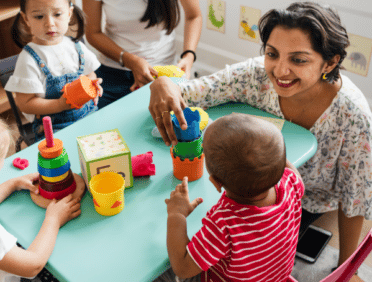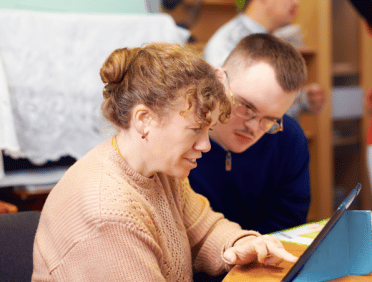If you work directly with children, then you have a responsibility to safeguard them from harm. This commitment to safeguarding is something which should take priority above all else, and is prevalent at all levels of the life of the child, especially the early years.
Thankfully, there is a lot of guidance that has been created for the purpose of giving people the necessary tools to make the proper safeguarding decisions. It’s important to understand these safeguarding tools to be able to work out how best to use them.
Any practitioner that is working within the early years setting needs to understand their role in safeguarding children. There are many different policies and measures that have been put in place, and a practitioner will be required to comply with all of them to make sure that the children you are working with are kept safe and safe from harm.
Safeguarding specifically is a term which is used to describe the protection of children from maltreatment and abuse. Safeguarding procedures that have been created for the early years setting have been specifically designed to make sure the children are given the safe and effective care they need to, and that every effort has been made to help give them the best possible future.
When it comes to dealing with effective safeguarding measures, there are a handful of principles that need to be implemented and kept at the forefront of every decision. First of all, the needs and happiness of the child should be put above everything else. Second of all, any issue that is encountered should be dealt with, where possible, before it becomes a threat to the welfare of a child and affects their life.
As a practitioner, it is your responsibility to safeguard the children in your care within an early years setting. This means that you have a responsibility to act in a timely, organised manner so that concerns and issues are resolved before they can have a negative impact on the child.
Anybody who works directly or indirectly with children in the early years setting should understand the symptoms and signs that indicate the welfare of the child is at risk. Furthermore, not only should you be able to stop any indicators that these symptoms are taking place, but you should also know how to respond to and then resolve any situation that might occur, as well as make the necessary referrals to other parties to guarantee child protection.
While it is true that all of the guides created for most practitioners focus on working with children rather than the specific early years setting, you should still consult them and use them as the basis for designing your own policy, adapting them where necessary.
You can use a lot of the guides and official structures designed by the government for the sake of creating safeguarding procedures for your team. These guidelines help to provide clear instructions on how to both record and respond to concerns about the well-being and safety of children in the early years setting.
Every early years safeguarding policy that you create should be aligned and in harmony with the policies of any local boards dedicated to safeguarding children that exist in your area. If you are somebody who holds the leadership role within the early years organisation you work in, then you have a responsibility to notify the team if there are practitioners in the area that have their own policies and procedures.
The purpose of a local safeguarding children board is to help align individual organisations across the country on how to promote the well-being of children and safeguard them effectively. Essentially, it creates a uniform set of guidelines that can be taken and used by everybody.
These boards also help to keep organisations accountable for their actions, and help guarantee that the safeguarding of children remains a priority within the local area. Within the confines of your local board, you will be given access to either a team or a designated officer that will be able to provide you with advice as you need it, and support for allegations of harm or abuse. All of the procedures that they will operate by are available online, and it’s often a good idea to receive training in them anyway.
Statutory Framework Foundation Stage
This framework is a mandatory piece of documentation for any early years providers operating in England from the 1st of September 2021.
With regards to the inspections and reporting on standards of provision available for early years organisations, the authority. OFSTED and inspections of independent schools. OFSTED have the power to issue actions and welfare requirements notices to any organisation that is found to not be complying with the regulations in a suitable way.
It is considered to be a criminal offence for a provider to fail to make the necessary changes to their property once served with the welfare requirements notice. Early years childminder agencies also have specific duties regarding the exercise of their functions.
Many parts of this guideline and references are denoted by the word “must”. If a document refers to must, then it should be done in a timely fashion, and is a legal requirement.
However, there are other sections of the guidelines which are simply marked “should”. In this case, these provisions must be done by taking into account a wide range of guidance, and practitioners should make reasonable changes unless they have suitable reason not to do so.
What Legislation Does This Framework Refer To?
The development and learning requirements are given a legal force made by an order and section 39 of the Childcare Act 2006. Any welfare and safeguarding requirements are made legally binding under Section 39 (1B) of the Childcare Act 2006.
Who is This Framework For?
This framework provides a tool for any early years providers in England. This covers maintained schools, non-maintained schools, or providers on the early years register, independent schools, and any provider is registered with an early years childminder agency.
Policy and Procedures for Early Years Management
Safeguarding policies and procedures are two of the most important documents an early years setting can have. However, it is important to notice the policy and procedure are two different pieces of information. The policy should set out the overriding nature of the document, and explain what you’re trying to do, but the procedure should outline the steps you take if something happens.
Ideally, policy and procedure should have an overarching statement which reaffirms your commitment to keeping children safe, and consider their health, safety, well-being, development and welfare. Every person working in the organisation should have clear access to a copy of the document, and it should also outline how you work with the local authority to ensure safeguarding.
The first thing that your policy should do is outline the concept of a designated safeguarding officer. This is an individual who has experience in safeguarding and they should be properly trained in order to provide information and support to the rest of the team.
The document should outline how your support officer works with other professionals, how they identify professional development for everybody, and there should also be a deputy who can step in if the designated officer is absent.
Your document should also include information about how you can support children appropriately, according to their age, ability and stage in life. You should also explain how your staff uses certain people to coordinate with groups of children, talking about how the setting encourages children to help in creating their own guidelines to feel safe.
Furthermore, this document should let parents know about your commitment as a provider, and how you will be safeguarding people. You should make sure that every parent is given a summary of both policy and procedure.
The document should also outline how you work with parents and other professionals if there is a concern relating to a specific child or parent. However, this should also be linked to a confidentiality statement which reassures parents that any information relating to a child will not be made public knowledge, but will instead be shared with the appropriate professionals as necessary.
With regards to recruitment, the document should clearly outline the recruitment procedures you follow. This should include subjecting all prospective staff to a full DBS check to make sure that they are safe. It should also outline the various questions that will include elements of safeguarding and values to be given to interviewing candidates to make sure that they are suitable for the position.
Following on from the interviewing process, your induction process should be clearly outlined within the document as well. This should stipulate that you will spend time explaining the policy to staff, making sure they understand and can interpret every part of it. Finally, your document to talk about continuing professional development for all staff, making sure they receive regular training to remain up-to-date on the latest guidance for safeguarding purposes.
Keeping Children Safe
With the appropriate training and suitable safeguarding policy, it’s possible to keep children safe within the early years setting. Every effort should be made to protect children, and to put their welfare above all other decision-making. You have a responsibility to design a policy that does this, follow it to the best of your ability, and to report any safeguarding concerns in a prompt fashion. Look to your local authority for guidance, as they will be able to provide you with the necessary tools to design a policy similar to their own that complies with the regulations laid down by the government.
How Do I Protect Children in My Care?
Protecting children in your care is a very important task which will directly influence how long your business stays open. There are a few things that you can do to make sure that you protect the children in your care properly:
- Design a safeguarding policy which has been created in conjunction with guidance from the local authority and safeguarding officer, and make sure that all staff are trained to not only understand it, but to be able to follow the procedures laid down.
- Provide regular training opportunities for all staff regarding safeguarding in the early years, making sure that they have access to rigorous retraining to stay up-to-date with current safeguarding methods and to be aware of any changes in regulations.
- Teach your staff to be aware of and know how to respond to any concerns regarding safeguarding, making sure that they follow the procedures laid down in the document and involve whatever relevant local authority is necessary.
Creating a Safe Organisational Culture
Creating a safe organisational culture is an important part of being able to properly safeguard children in the early years. There are things that you can do to make sure that your culture is not only improving all the time, but it’s also safe for children to be in.
Communication between staff members is essential, as it is clear policies that are easily interpreted. There should be an ongoing commitment to training, because this will help to make sure that staff remain up-to-date on what’s going on. Furthermore, there should be a safe organisational and reporting process in place. Staff should feel like they can raise concerns.
Why Are Risk Assessments Important?
Risk assessments are important because they provide us with key information regarding what to do if we want to be able to safeguard children properly. Conducting a safeguarding risk assessment is vital for identifying areas where people can improve, and making sure that all the key areas where risks might take place have been accurately measured and checked.
Safeguarding Self Assessments Audit
There are a number of tools available that help an organisation work out, assess and identify their abilities to safeguard against sector standards. Good examples of this include things like the Core Humanitarian Standard/CHS Alliance tools.
These self assessments help organisations to work out where they meet international standards, and where they do not. This can help people to identify what measures are in place already, what gaps exist, and what to make a priority when planning and implementing new changes.
Conducting self assessment throughout your safeguarding journey is an important way of monitoring and measuring progress. After all, updated safeguarding plans allow for maximum protection. Once you have established adequate safeguarding measures, these self-assessment tools can be adapted and used over and over.
As either a practitioner or a volunteer, you have to be switched on an alert to the symptoms and signs of abuse, as well as know how to report safeguarding concerns and escalate the problem if necessary.
Your safeguarding policy will outline who to contact in the event that you have a concern. Sometimes it will be the safeguarding officer, and sometimes it will be your direction period. However, you should feel that you can report concerns if necessary, and you should push for them to be properly investigated if you are worried.
Learn Q provides critical training in this arena and can help a wide range of early years practitioners gain the information necessary to make key decisions about the welfare of children in their care. This training is a vital part of working in early years so it is important to seek out the necessary education now. We’re happy to train your entire staff if needed.
To download a .pdf of this blog, please click here











